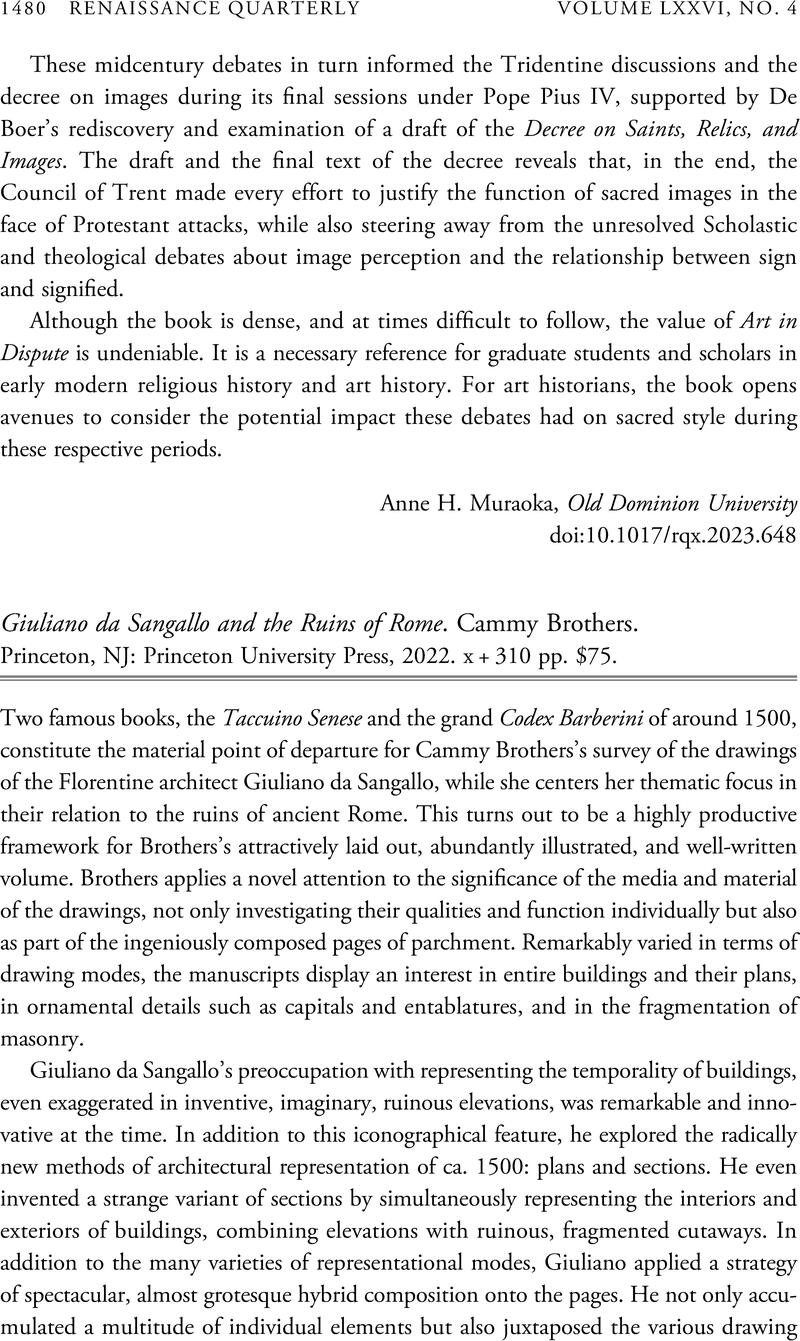No CrossRef data available.
Article contents
Giuliano da Sangallo and the Ruins of Rome. Cammy Brothers. Princeton, NJ: Princeton University Press, 2022. x + 310 pp. $75.
Review products
Giuliano da Sangallo and the Ruins of Rome. Cammy Brothers. Princeton, NJ: Princeton University Press, 2022. x + 310 pp. $75.
Published online by Cambridge University Press: 24 January 2024
Abstract
An abstract is not available for this content so a preview has been provided. Please use the Get access link above for information on how to access this content.

- Type
- Review
- Information
- Copyright
- Copyright © The Author(s), 2024. Published by Cambridge University Press on behalf of the Renaissance Society of America



